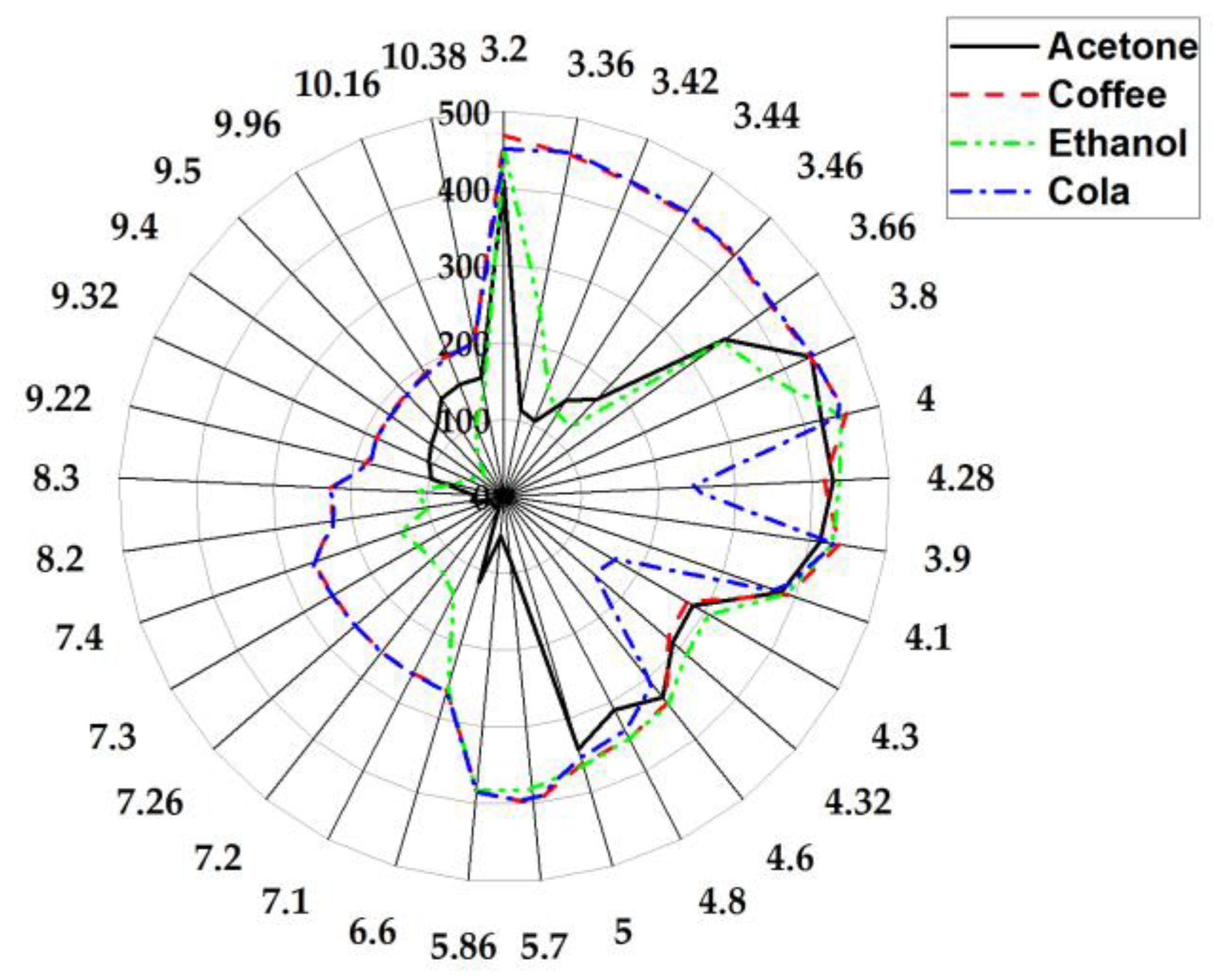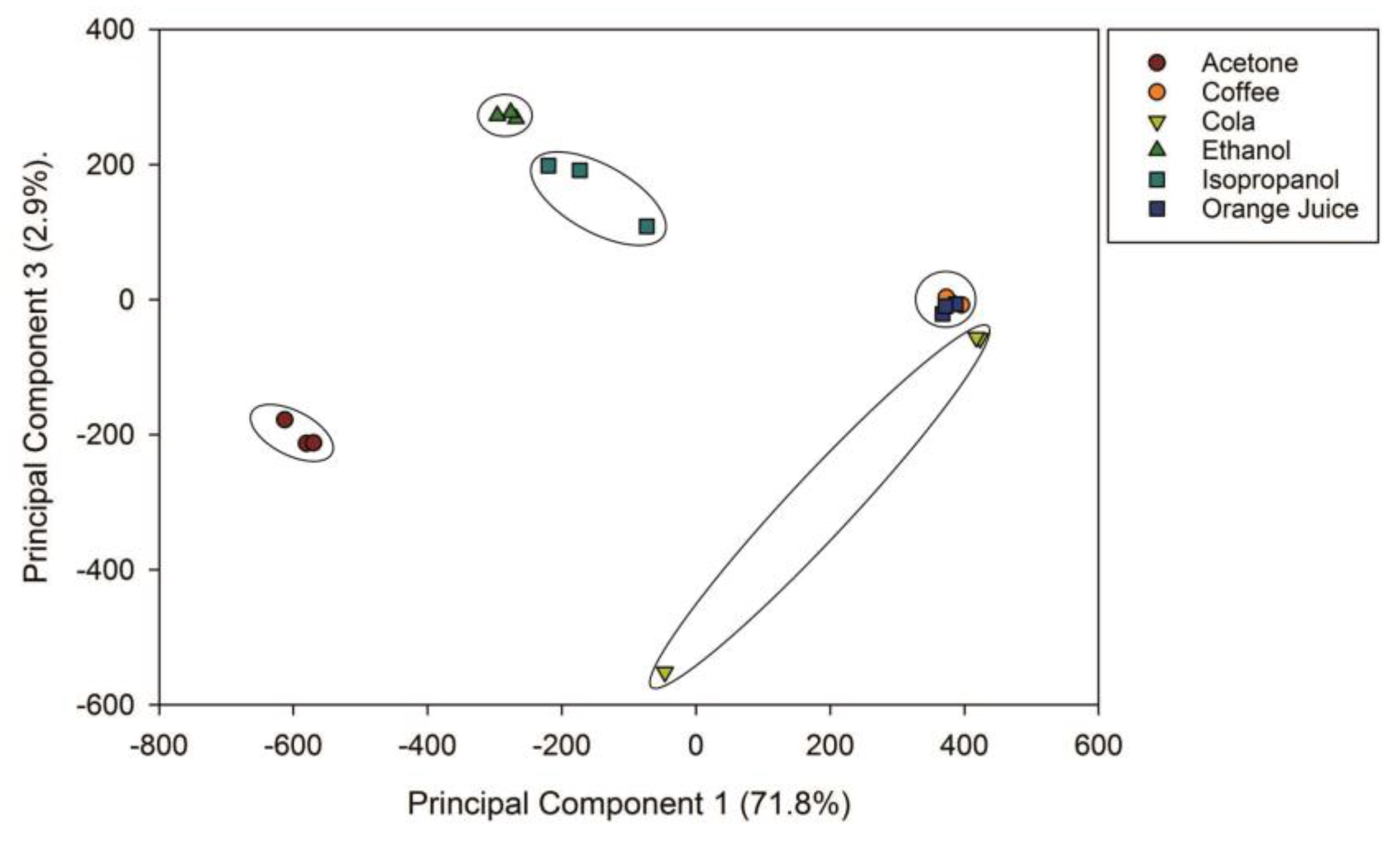Low Cost Optical Electronic Nose for Biomedical Applications †
Abstract
:1. Introduction
2. Materials and Methods
Warwick Optical Electronic Nose
3. Results
4. Discussion & Conclusions
Conflicts of Interest
References
- Pelosi, P.; Persaud, K. Gas sensors: Towards an artificial nose. In Sensors and Sensory Systems for Advanced Robots; Springer: Berlin/Heidelberg, Germany, 1988; pp. 361–381. [Google Scholar]
- Persaud, K.; Dodd, G. Analysis of discrimination mechanisms in the mammalian olfactory system using a model nose. Nature 1982, 299, 352–355. [Google Scholar] [CrossRef] [PubMed]
- Arasaradnam, R.P.; Ouaret, N.; Thomas, M.G.; Quraishi, N.; Heatherington, E.; Nwokolo, C.U.; Bardhan, K.D.; Covington, J.A. A novel tool for noninvasive diagnosis and tracking of patients with inflammatory bowel disease. Inflamm. Bowel Dis. 2013, 19, 999–1003. [Google Scholar] [CrossRef] [PubMed]
- Covington, J.A.; Westenbrink, E.W.; Ouaret, N.; Harbord, R.; Bailey, C.; O’Connell, N.; Cullis, J.; Williams, N.; Nwokolo, C.U.; Bardhan, K.D. Application of a novel tool for diagnosing bile acid diarrhoea. Sensors 2013, 13, 11899–11912. [Google Scholar] [CrossRef] [PubMed]
- Neumann, N.; Ebermann, M.; Kurth, S.; Hiller, K. Tunable infrared detector with integrated micromachined fabry-perot filter. J. Micro/Nanolithogr. MEMS MOEMS 2008, 7, 021004. [Google Scholar] [CrossRef]
- Vaughan, M. The Fabry-Perot Interferometer: History, Theory, Practice and Applications; CRC Press: Boca Raton, FL, USA, 1989. [Google Scholar]




| Manufacturer | Type | Optical Wavelength (μm) |
|---|---|---|
| InfraTec | LFP-3144C-337 | 3.1 to 4.4 |
| InfraTec | LFP-3850C-337 | 3.8 to 5.0 |
| InfraTec | LFP-8850C-337 | 5.5 to 8.0 |
| InfraTec | LFP-80105C-337 | 8.0 to 10.5 |
Publisher’s Note: MDPI stays neutral with regard to jurisdictional claims in published maps and institutional affiliations. |
© 2017 by the authors. Licensee MDPI, Basel, Switzerland. This article is an open access article distributed under the terms and conditions of the Creative Commons Attribution (CC BY) license (https://creativecommons.org/licenses/by/4.0/).
Share and Cite
Esfahani, S.; Covington, J.A. Low Cost Optical Electronic Nose for Biomedical Applications. Proceedings 2017, 1, 589. https://doi.org/10.3390/proceedings1040589
Esfahani S, Covington JA. Low Cost Optical Electronic Nose for Biomedical Applications. Proceedings. 2017; 1(4):589. https://doi.org/10.3390/proceedings1040589
Chicago/Turabian StyleEsfahani, Siavash, and James A. Covington. 2017. "Low Cost Optical Electronic Nose for Biomedical Applications" Proceedings 1, no. 4: 589. https://doi.org/10.3390/proceedings1040589






